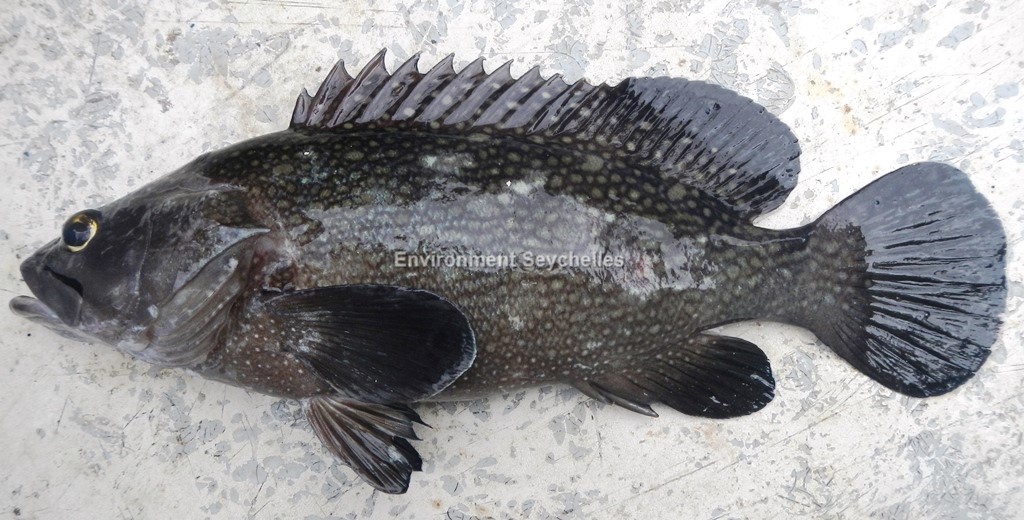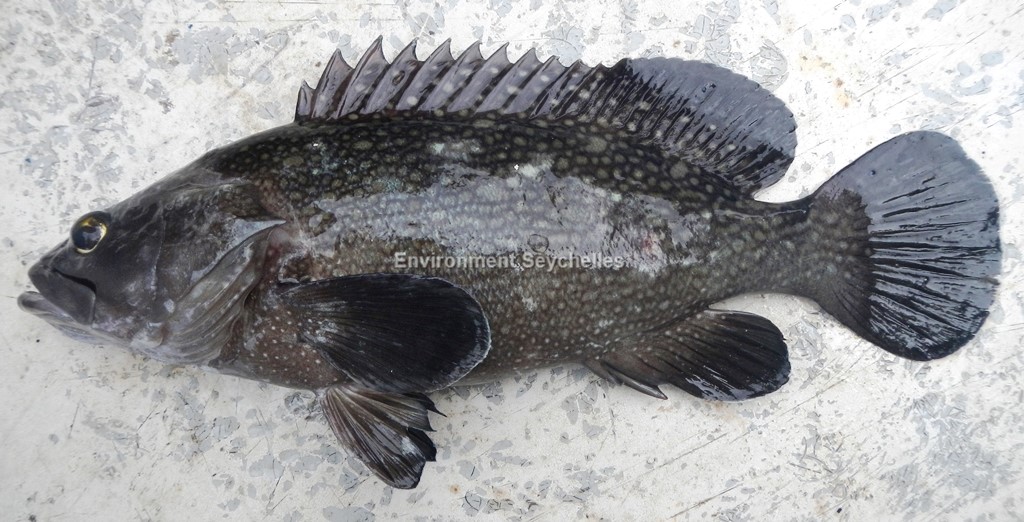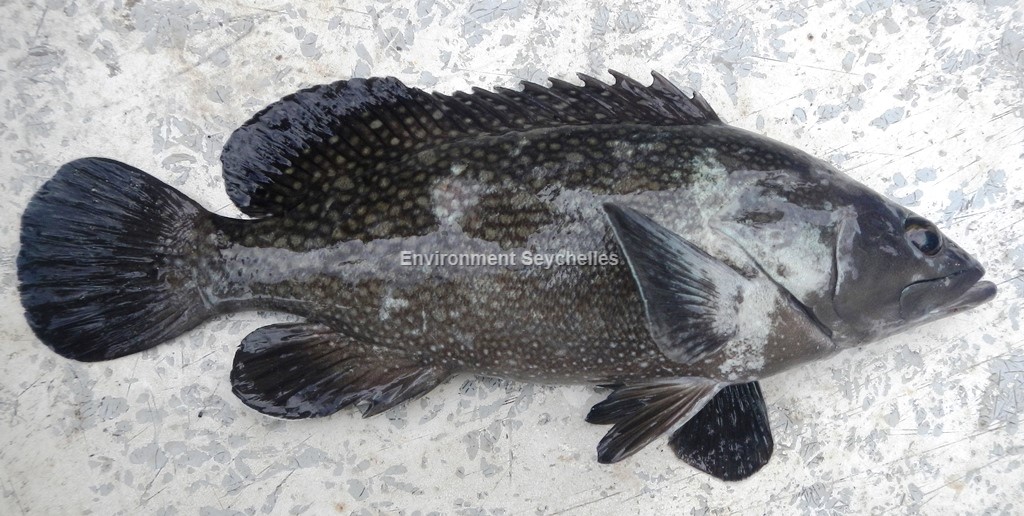Description:
Dorsal spines: 11; Dorsal rays: 14-16; Anal spines: 3; Anal rays: 8-9.
Moderately full-bodied grouper. Posterior nostril of adults vertically elongate. Maxilla extends to vertical at rear edge of eye. Serrae at the angle of the preopercle slightly
enlarged; the upper edge of the operculum strongly convex. Interspinous dorsal fin membranes incised. Caudal fin rounded.
Colour. Dark olive brown to dark brownish grey; head and body with large pale blotches and numerous small white spots overlying this pattern. Fins covered with small white
spots except for the pectoral fins with a white spots are usually confined to the base. Black maxillary streak. Blackish brown blotches are sometimes visible at the base of
the dorsal fin and on top of the peduncle. Juveniles dark grey, with large dark edged white spots of variable size on the head, body and fins.
Size:
Maturity: Lm unknown. Range unknown. Max Length: 52 cm TL. Common length 40 cm TL.
Habitat and Ecology:
Inhabits shallow protected coral reefs and shallow lagoons and seaward reef slopes (depth 1-30 m). Feeds on fishes and crustaceans.
Fishery Status:
This species is not protected or subject to fishery regulations. It is presumably caught in the handline and fish trap fisheries, but appears to be a very rare component of the catch.
Notes:
E. summana is similar in appearance to E. ongus. E. ongus has longer pectoral fins, longer pelvic fins and adults do not have vertically elongated posterior nostrils. E.
ongus has a narrow white margin and broad blackish submarginal band posteriorly on the median fins (these markings are absent or poorly developed in E. summana). The white
spots on adult E. ongus tend to coalesce posteriorly to form narrow wavy longitudinal stripes.
This species is typically considered as an endemic of the red Sea and Gulf of Aden. However other sources cite it as occurring in the Andaman Islands, China and even Palau.
The renowned ichthyologist JLB Smith recorded E. summana in Seychelles in the 1950s. It was not documented again however until this specimen in 2014.
References:
Craig, M.T. et al. (2011). Groupers of the World - a field and market guide. NISC (Pty) Ltd, South Africa. ISBN: 978-1-920033-11-8
Froese, R. & D. Pauly. (Eds.) (2019). FishBase. https://www.fishbase.se/summary/Epinephelus-summana.html (06/03/19).
Samoilys, M. (2018). Epinephelus summana. The IUCN Red List 2018: http://dx.doi.org/10.2305/IUCN.UK.2018-2.RLTS.T132728A100559239.en. (06/03/19).
Smith, J.L.B. & Smith, M.M. (1963). The Fishes of Seychelles. Department of Ichthyology. Rhodes University. Grahamstown.
Citation:
Nevill, J.E.G. (2019). Epinephelus summana, Summan grouper. Seychelles Seatizens. www.seatizens.sc. https://seatizens.sc/species/epinephelus-summana-forsskal-1775/ (edited 06/08/22).




There are no comments